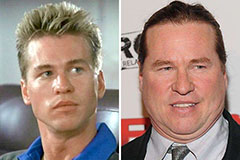The Basic Principles Of The Diamond Box
Table of ContentsThe Buzz on The Diamond BoxWhat Does The Diamond Box Mean?The 30-Second Trick For The Diamond BoxHow The Diamond Box can Save You Time, Stress, and Money.Getting The The Diamond Box To Work
According to an RJC auditor, distributors only need to promise that they perform solid civils rights due persistance, yet do not give any evidence for this. Neither does the Code of Practices need jewelersor other downstream companiesto have traceability or chain of custody of their gold or diamonds. The Code of Practices is likewise weak in various other substantive locations, for instance, on aboriginal individuals' legal rights and on resettlement.For instance, in March 2017, the RJC had 342 participants who had not (yet) finished the audit procedure that licenses conformity with the Code of Practices. Additionally, companies can sign up with at any level of their operations. A small subsidiary office of a huge jewelry firm can apply for RJC subscription, without including the rest of the business's entities.
The Code of Practices does not call for business to openly report on the concrete steps they have taken to conduct due diligencea core demand of the OECD Support (G Shock Watches). Its reporting commitments are vague and do not point out due persistance or the demand for firms to report on the steps they have actually taken to recognize, evaluate, and alleviate risks in their supply chains
What Does The Diamond Box Do?
A second RJC requirement, the Chain-of-Custody Requirement, promotes traceability and is much more strenuous, but adherence to it is optional for RJC members. By early 2018, only 48 of over 1,000 member companies had certified entities under the requirement, including 13 jewelry experts. The Chain-of-Custody Standard needs business to develop docudrama proof of service transactions along the supply chain and to verify they are not creating unfavorable influences in conflict-affected and high-risk locations.
Instead, companies are allowed to select some "entities" under their control for qualification, leaving various other entities of a firm uncertified. While this might enable companies to gradually switch to more responsible sourcing techniques, the present practice also lugs the risk that an entire business delights in the reputational benefit when most of operations is not in conformity with the criterion.
All RJC participant companies have to undergo an audit to demonstrate that they are certified with the Code of Practices, and to receive qualification. Those firms that select to acquire qualification for the Chain-of-Custody Standard have to undertake a different audit. Audits are based mostly on a review of the firm's written plans and paperwork, and brows through to a "depictive collection" of centers.
The Basic Principles Of The Diamond Box

Audits are intended to include inquiries on a broad range of human civil liberties, auditors are not always certified human legal rights specialists (tennis bracelets). Once the auditors finish their record, they just send a summary record of the audit to the RJC, not the complete audit report, which is shared just with the business
While labor abuses prevail in the sector, artisanal mines provide income for countless workers and hundreds of mining areas. Person Rights Watch thinks that the precious jewelry industry should make every effort to ensure that their initiatives to alleviate supply chain civils rights dangers do not lead them to merely omit all artisanal providers from their supply chains as the "path of the very least resistance." Instead, they should support efforts to define and professionalize artisanal mines and boost functioning problems.
The OECD Charge Persistance Assistance acknowledges this and is advertising cost-sharing within the industry. That means, all business along the supply chain share the monetary concern. A number of campaigns have arised that can aid jewelers trace their gold and rubies to mines of origin, and much more responsibly source from the artisanal sector.
Facts About The Diamond Box Revealed

(https://tdiamondboxza.weebly.com/)
2 standardscertify artisanal and small golden goose that satisfy civils rights, labor legal rights, and environmental standardsthe Fairmined Requirement and the Fairtrade Gold Standard. Both need third-party audits of specific mines. The Fairmined Standard was introduced by the Partnership for Accountable Mining (ARM) in 2014. Depending upon the customer's license with Fairmined, the gold may be totally traceable to the mine of origin, or may be mixed with various other gold.
This amount is just a tiny portion of the gold made use of every year by numerous of the companies analyzed in this report. As of very early 2018, 8 mines in 4 countries (Bolivia, Colombia, Mongolia, and Peru) were accredited, with an additional 20 mining organizations working towards accreditation. The Fairmined Gold Criterion is presently creating a brand-new "market entrance" criterion that looks for to help artisanal gold mines in the process towards complete accreditation.
The Ultimate Guide To The Diamond Box

 Ariana Richards Then & Now!
Ariana Richards Then & Now! Bradley Pierce Then & Now!
Bradley Pierce Then & Now! Devin Ratray Then & Now!
Devin Ratray Then & Now! Val Kilmer Then & Now!
Val Kilmer Then & Now! Charlie Korsmo Then & Now!
Charlie Korsmo Then & Now!